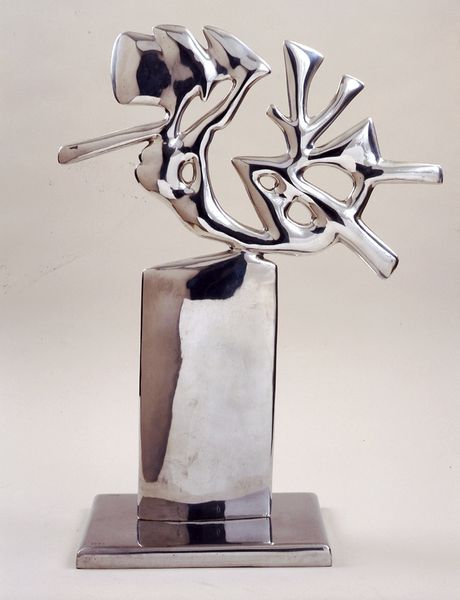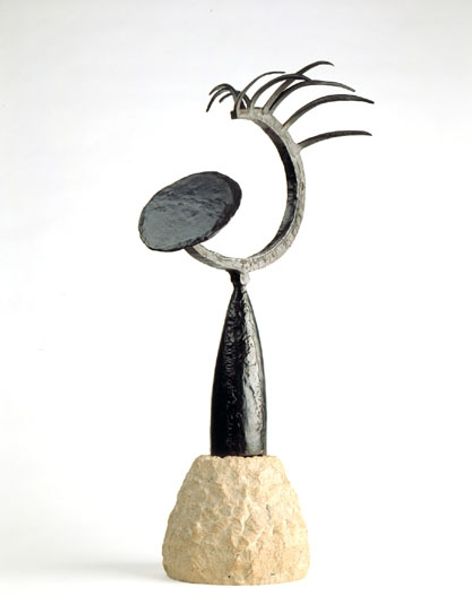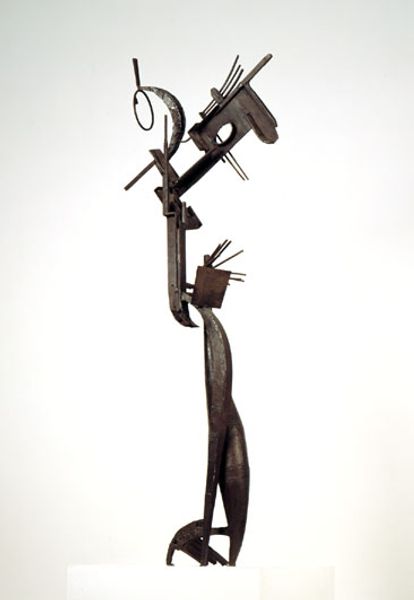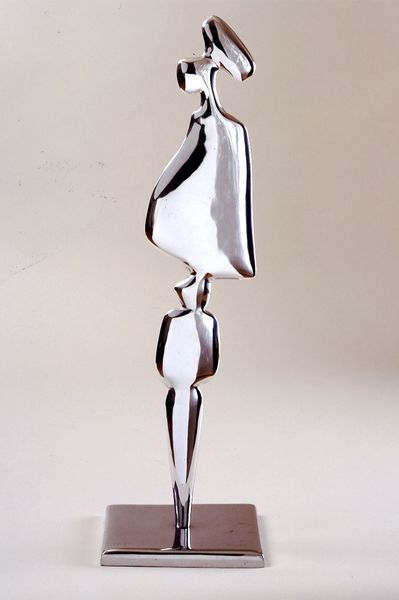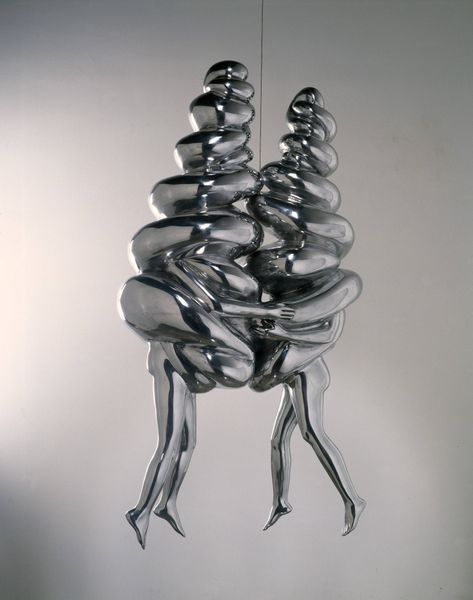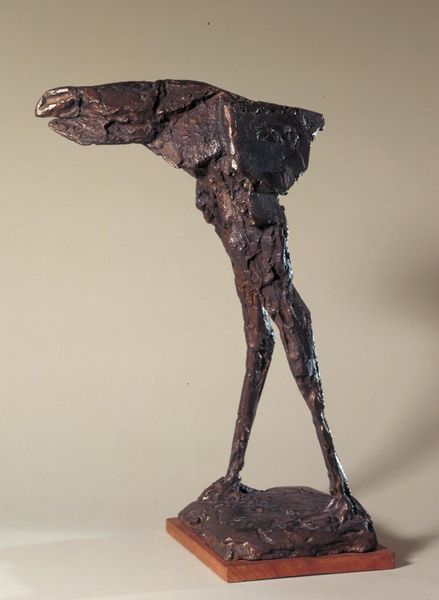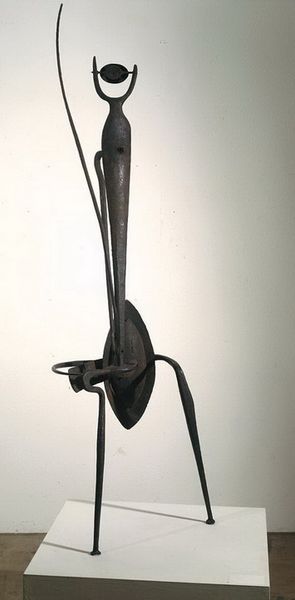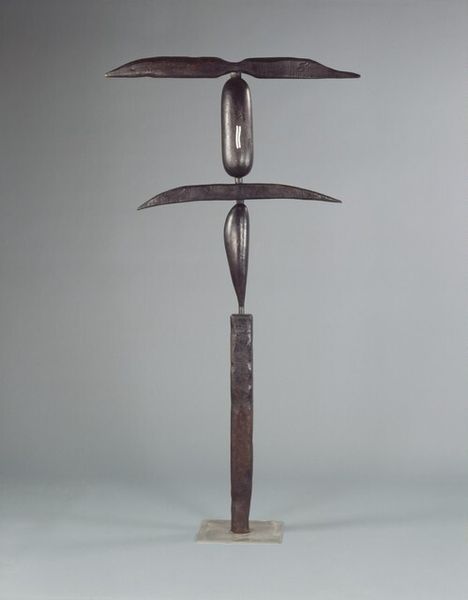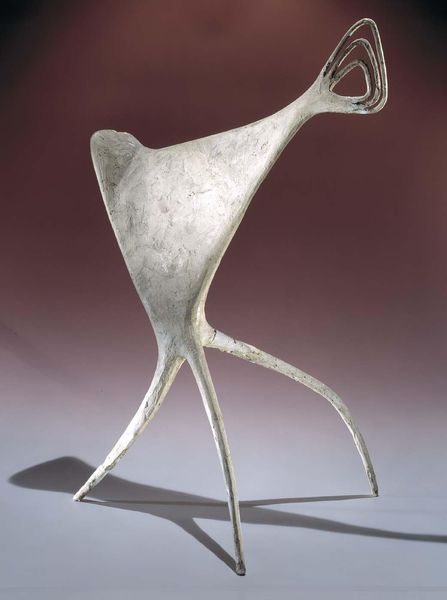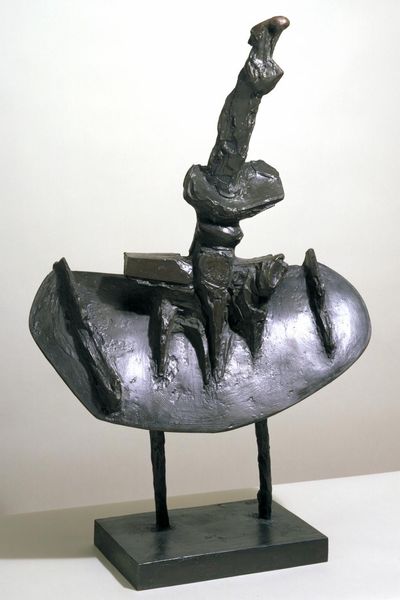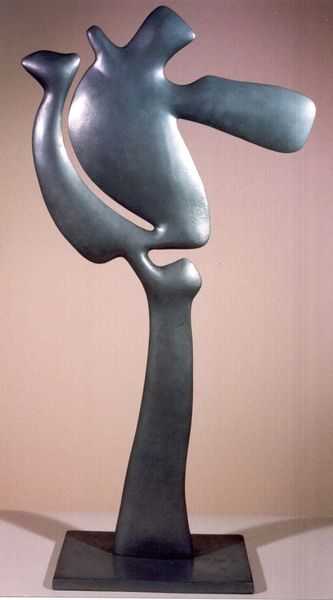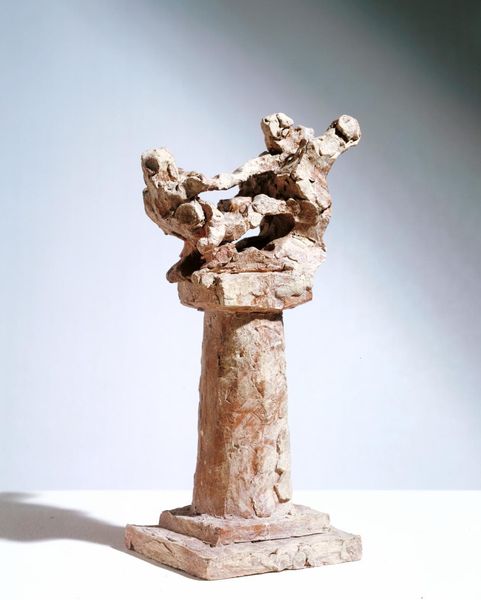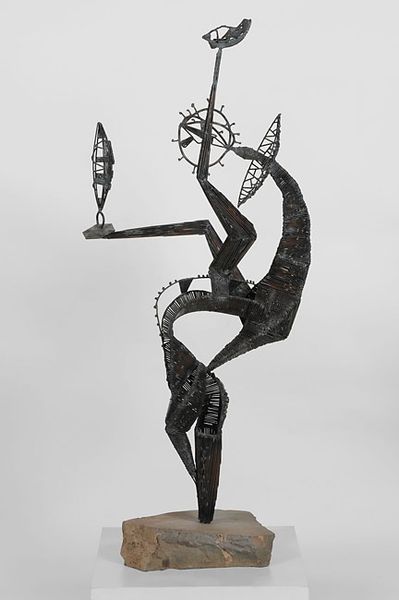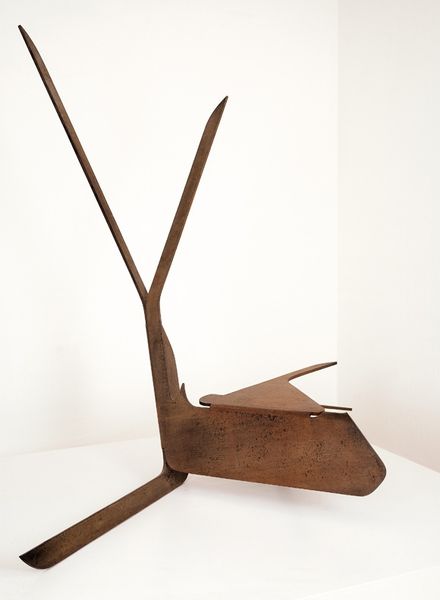
metal, sculpture
#
metal
#
sculpture
#
abstract
#
sculpture
#
modernism
Copyright: Etienne Hajdu,Fair Use
Curator: Standing before us is "Founette," a 1965 sculpture by Etienne Hajdu. The primary medium here is metal. What springs to mind when you see this? Editor: I'm struck by its strange serenity. The smooth, cool metal, and the way the forms suggest both growth and stillness… It feels very science-fictiony. Curator: Hajdu was very interested in the tension between the natural world and the constructed one, so your reaction feels quite on the mark. If we look closely, we notice how he’s polished the metal to almost a liquid sheen in some areas, juxtaposed with the rougher texture elsewhere, to emphasize contrasts. Editor: It’s this deliberate contrast that I find fascinating. I wonder about the processes involved in making this. Was it cast? Welded? What kind of labor went into creating those intricate, spiky shapes at the top? It speaks to me of both industry and artistry. The material gives it such weight but such a delicate and fine form, how he marries these is masterful. Curator: There's a certain rhythm to these elements. A flow state, you might even say. Hajdu had a really beautiful saying about how the best sculpture has a musicality. Something beyond the simply visual… almost like trying to capture sound, I think. Editor: Absolutely, and it speaks volumes about how the status of sculpture shifted in modernist times. It demanded more and more industrial tools in its production, even when evoking nature like this piece does. The way we consume raw materials—a vital context—really emphasizes that conversation. Curator: It does indeed. It seems that we both read "Founette" rather differently. To me, the essence of Hajdu's creative project exists at the intersection of form, the raw material, and a more ephemeral emotional and expressive register. What he is suggesting moves and echoes through us beyond words. Editor: Perhaps art, or more accurately, the reception of it is just a meeting of these different readings and insights, curator. And like all raw materials and all production processes, that reading also lives in the social context that shapes its meaning. Thanks for making that conversation clear.
Comments
No comments
Be the first to comment and join the conversation on the ultimate creative platform.
